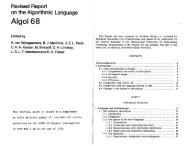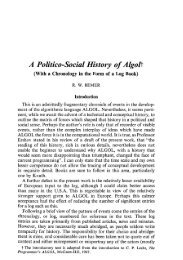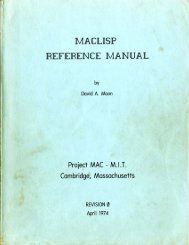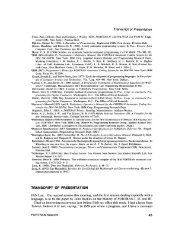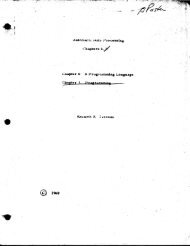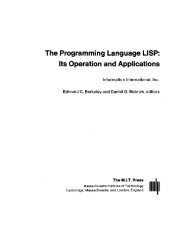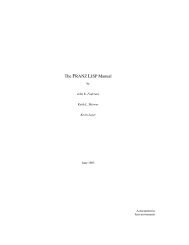LISP I Programmer's Manual - Software Preservation Group
LISP I Programmer's Manual - Software Preservation Group
LISP I Programmer's Manual - Software Preservation Group
Create successful ePaper yourself
Turn your PDF publications into a flip-book with our unique Google optimized e-Paper software.
5.2 Tracing OptionA <strong>LISP</strong> tracing function called tracklist is available tohelp the user locate his program errors. Of course, as withany tracing system, tracklist consumes both time and paper, butin some cases it may prove helpful.The function tracklist is a function of one argument, x,which is a list of the <strong>LISP</strong> functions to be traced. Each functionmentioned in the list must be a function which has EXPR,FEXPR, SUBR or FSUBR on its association list. Further iftracklist is to trace a function which is on the ''topLkevelYx .of APPLY, i.e. the f in apply[f;x;p], then the S-expression forf must start with LAMBDA or LABEL. Finally tracklist cannottrace the functionscarcdrcons'listWhenever one of the functions included in the argument oftracklist is encountered during the running of the <strong>LISP</strong> program,tracklist gives a print-out (on or off-line depending onsense switch 3) of the name of the function, its type, e.g.SUBR, its arguments, and finally its value. Thus the path ofcomputation followed by the program is recorded.If tracklist is called into action within a computationpreceded by a SET direction card (see Section 5.1), it continuesto trace its arguments for the rest of the run (providedthe SET card is successful and determines a new "base" image).If tracklist occurs within a computation preceded by a TST directioncard it continues only up to the STOP card.



